If you’ve been to the park recently, you may have noticed that our lemur walk through enclosure has undergone a major renovation! A new route through the enclosure has been made and more exciting trees, branches and climbing equipment installed. It opened this week and we have some wonderful new residents waiting to greet you!
Earlier in May, we welcomed four male ring-tailed lemurs from Africa Alive Zoo. They are all brothers and it’s safe to say, they’re a friendly bunch! Let’s introduce you to the girls and the boys!
The girls
Leah
Leah has recently turned 18 years old and is the leader of the female group. The easiest way to tell her apart is by the black V shape that runs from her eyes to her nose.
In troops of ring-tails, males are always at the bottom of the hierarchy. Females usually tolerate only one male in a group! Other males will hang around the periphery of the territory and when they think the time is right, they will challenge the current male to a fight to take over.
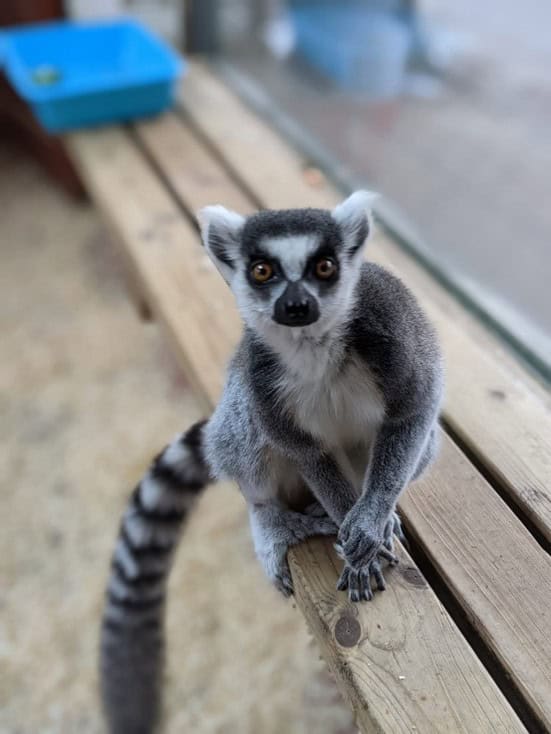
Lulu
Lulu is the oldest lemur having turned the ripe old age of 26 this June. Normally in the wild, lemurs could live between 15-18 years old. However in captivity, they can go into their 30s with the world’s oldest lemur reaching 36. Lulu is an easy individual to recognize due to being the biggest girl and also having the shortest tail. Sadly, she lost the end of her tail in a fight a few years back. She has had several babies over the years and is grandmother to our youngest lemur, Flo.
All ring-tailed lemurs are born with exactly 26 stripes on their tail. They have 13 black and 13 white stripes on their tails, hence their name. They hold their tails high like a flagpole so when they are moving through the long grasses of Madagascar, they can keep an eye on where each other are. Their tails also help them balance, much like a cat, when moving along branches, ropes etc.
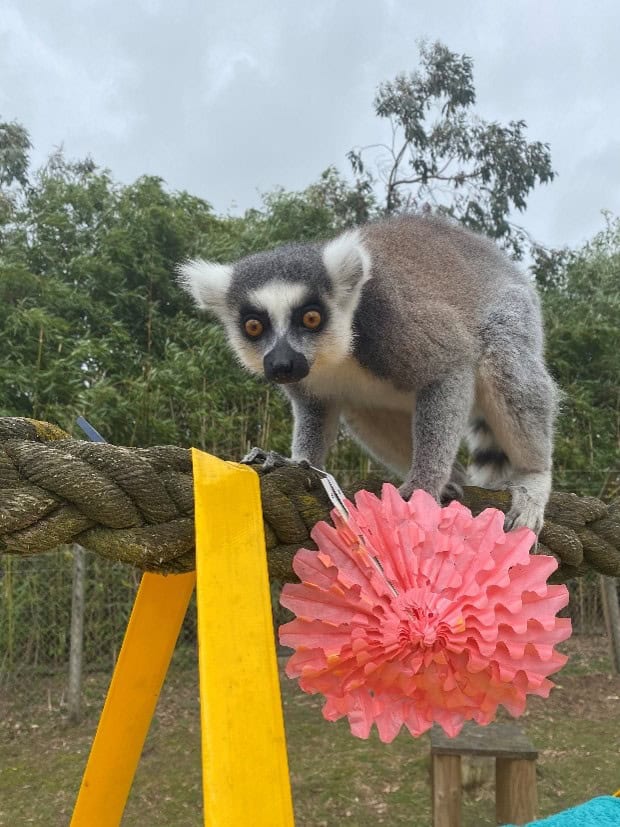
Flo
The smallest lemur is Flo, she has just turned 5 years old and is the most energetic of the group. In the walkthrough, she was often one of the friendlier ones who will jump on the public’s back and particularly likes to lick baseball caps, especially if it’s a hot day and they taste a bit salty. Female lemurs are only fertile for around 24-36 hours of an entire year, usually around November so their breeding window is very short. During this time, a female will mate with up to three different males including her own and any neighboring males who will guard the female after mating.
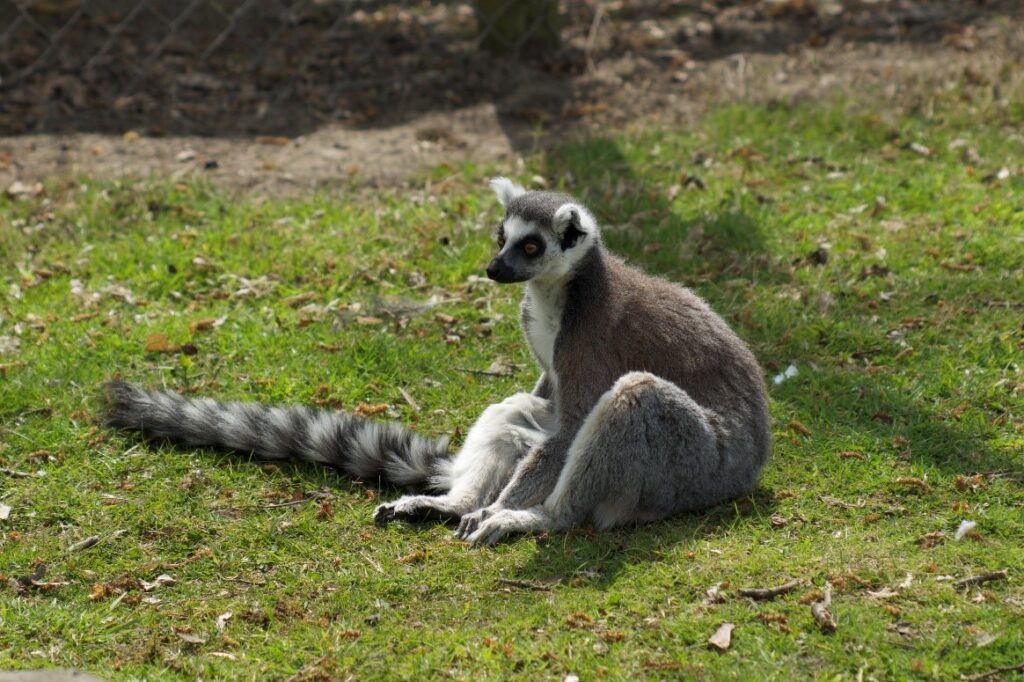
Now for the boys
So those are the easy ones! Our four new boys are a little harder to differentiate and are still causing some of the keepers to muddle them up, it’s also made harder as they are very active and don’t stay still for long. Let me introduce you to Scruff, Armi, Monty and Maki.
Scruff
Scruff is 18 years old and with his twin Armi- they are the eldest of the males. He is the easiest to tell apart as he has a very visible tip of his tail. He also has a long nose with a black V line running down it much like Leah.
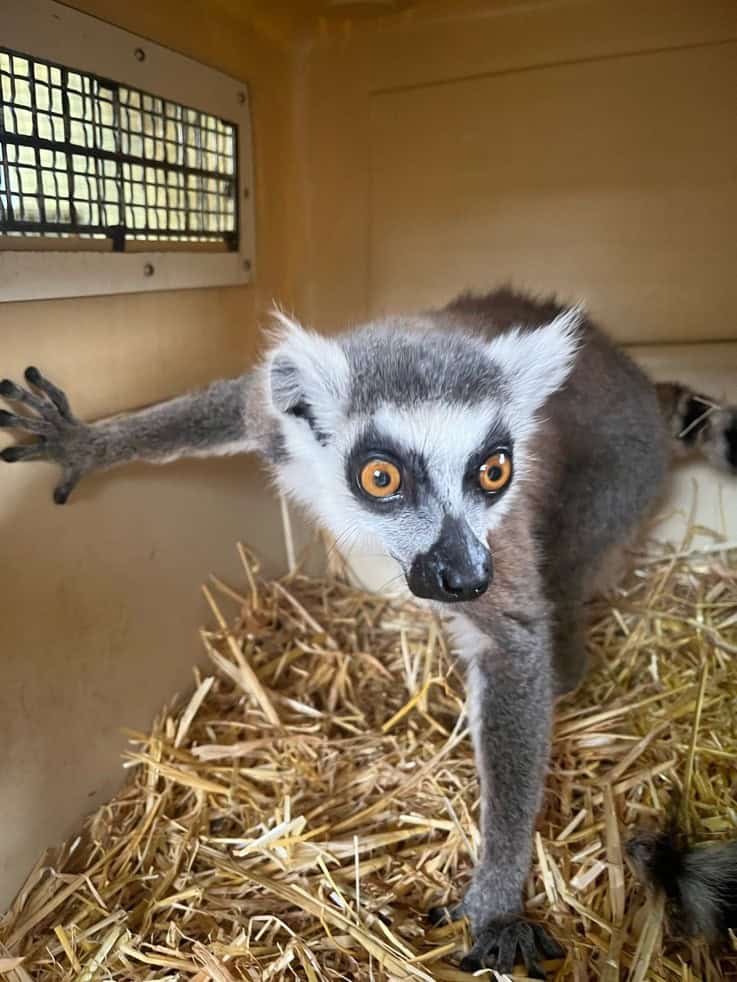
Armi
Armi is Scruff’s twin and he also has the black V line running from his eyes down to his nose, although much fainter.
Twins can be common in ring-tailed lemurs. When a baby is born, they stay on mums chest for the first 2 weeks of life. Gradually, they will move round to back of mum and start taking steps on their own at around 3-4 weeks of age. They begin eating solid food between 2 weeks and 1 month old. Around 5 months old, the young are fully weaned. They will reach full growth and maturity at around 3 years of age. When ring-tails reach maturity, males will migrate to other groups whereas the females will stay with their natal/ family group.
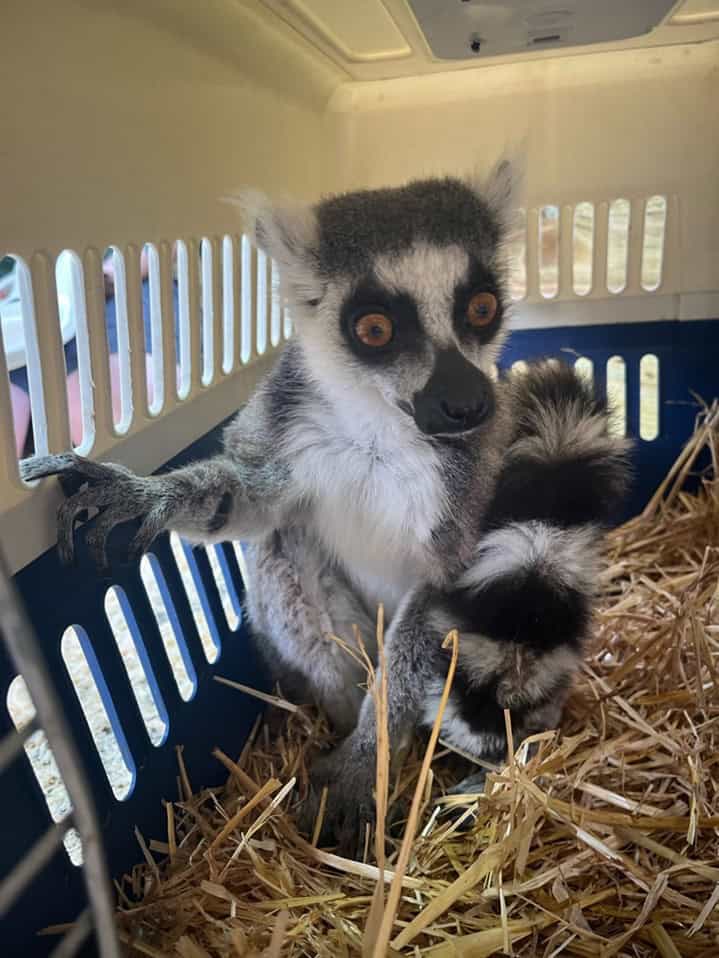
Monty
Monty is 17 years old and he can be identified by a bump on the bridge of his nose. He is the lowest ranking so tends to get picked on a little bit by the others.
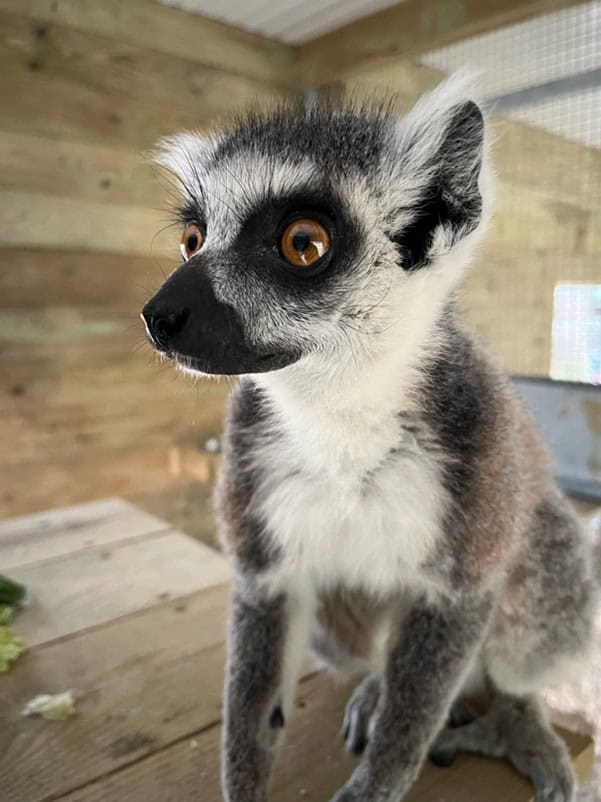
Maki
Our youngest boy is 16 years old and has the tuftiest ears with large diamond shaped eyes.
Ring-tailed lemurs are opportunistic omnivores meaning they will eat meat when its available although will mostly eat fruits and leaves. In the wild, ring-tails will eat a variety of flowers, bark, insects, invertebrates, fruit and leaves.
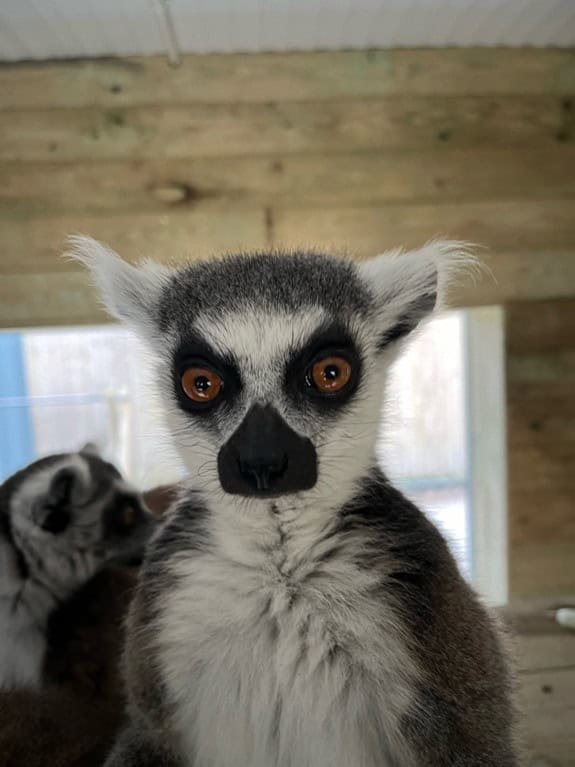
Why are they separate?
We have to keep our boys and girls separate to avoid fighting but a lemur fight might not be exactly what you think. We call fights between ring-tailed lemurs ‘stink fights’. Males will will rub their long tails over scent glands on their wrists and chest to get them nice and smelly. They will then waft their tails at each other, waving their scent around. The smelliest male is the winner!
Lemurs usually only tolerate one male in a group, so we have had to keep our existing three female ring-tails in their current enclosure.
Are they endangered?
Lemurs are endemic to Madagascar. Endemic means that’s the only place in the world you will find them living in the wild. There are around 100 different species of lemur. This ranges from the critically endangered Indri lemur weighing up to 10kgs to the tiny pygmy mouse lemur which small enough to fit into the palm of your hand at around 50grams. Ring-tailed lemurs are one of the most common lemur species found in captivity due to their fairly chilled and often affectionate nature. However, Indri lemurs do not survive in captivity due to a highly sensitive nature and specialized diet.
Ring-tails are now classed as endangered with as few as just 2000 remaining in the wild! As well as being predated on by fossa, lemur numbers are suffering due to habitat loss and deforestation as well as the bush meat and the pet trades. Many zoos are part of a successful breeding program which can, in time, aim to release lemurs back into protected areas of Madagascar to increase the population!


